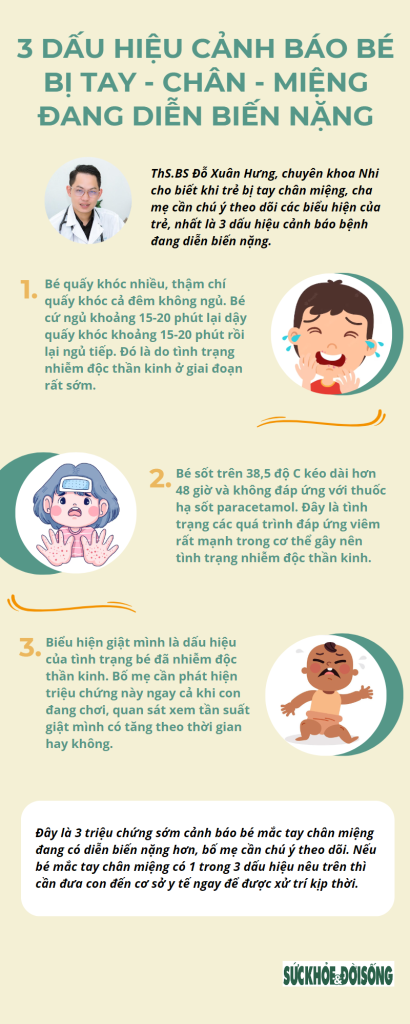NewsDesk @bactiman63
In the week ending September 9, Vietnam health authorities reported 4,324 cases of hand, foot and mouth disease (HFMD), including one death in Dak Lak.
 This compares to 3,621 cases reported the previous week.
This compares to 3,621 cases reported the previous week.
Cumulatively since the beginning of the year, the whole country recorded 80,747 cases and 21 deaths. Compared to the same period in 2022 (47,896/3), the number of cases increased by 68.6%, and deaths increased by 18 cases.
From the beginning of 2023 until now there has been an increase in the rate of positive cases with the EV71 strain. Experts also say that the disease can occur in all subjects, however up to 90% of cases occur in children under 3 years old. The EV71 strain often causes severe illness and can easily cause complications and possibly death.
This year, officials received more children with neurological complications, the most typical of which was encephalitis. Pediatric patients admitted to the hospital are usually alert, without much mental disturbance, but show signs of startle, especially startle at the beginning and end of sleep; In addition, there are also symptoms such as shaking limbs, staggering walking, etc.
Subscribe to Outbreak News TV on YouTube
Hand, foot and mouth disease often begins with symptoms of fever, loss of appetite, irritability and sore throat.
From 1 to 2 days after fever, sores appear in the mouth, causing pain. They start as red blisters and often develop into ulcers. These ulcers are mainly on the tongue, gums and inside the cheeks.
A non-itchy rash appears over 1-2 days as flat or raised red lesions, some with blisters.
The rash is often concentrated on the palms of the hands or soles of the feet; Can also appear on the buttocks and/or genitals.
Pediatric patients may also have no typical symptoms or may only have a rash or mouth ulcers.
Experts say that hand, foot and mouth disease has many dangerous complications and especially develops very quickly within a few hours. Therefore, when children are treated at home, in addition to taking care of the child and giving them medicine according to the doctor’s instructions, parents need to closely monitor the child’s disease progression to promptly take the child to a medical facility.
- Laos reports 1st monkeypox case
- Bangladesh: Dengue deaths top 900, 2/3s in Dhaka
- Anthrax cases in beef cattle rise in North Dakota
- Japan reports 1st Japanese encephalitis case of 2023 in Kumamoto Prefecture
- Monkeypox outbreak in DRC
- Dengue outbreak declared in Jamaica
- Bay Pines VA Healthcare System recognized for excellence in sterile processing
- 5 Ways to Keep Your Gallbladder in Good Health
- Maine: Eastern Equine Encephalitis confirmed in farm animals in Piscataquis County
- Dengue fever: Italy locally transmitted cases rise to 27
- Cholera: Cases more than double in 2022, 44 countries reported cases


3 thoughts on “Vietnam: More than 80,000 hand, foot and mouth disease cases, 21 deaths reported in 2023”